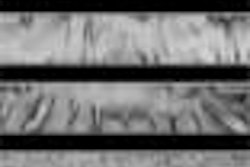For years, radiologists focused on the myriad technological and clinical advances in CT without too much concern that radiation dose would outweigh the technology’s benefit to patients.
But thanks to those same technological and clinical advances, doses began to increase, and radiation has reemerged as a major concern for the CT community. These concerns have given rise to new regulatory initiatives, and spurred the development of dose-reduction technologies and protocols. Most recently, the August issues of Radiology and the American Journal of Roentgenology (AJR) include multiple articles on the subject, and several CT protocols for dose reduction.
CT procedures are the only area in diagnostic radiology in which doses have gone up instead of down in the past few decades, according to a report published in AJR from a conference sponsored by the National Council on Radiation Protection and Measurements.
"Multidetector units tend to contribute greater dose than single-slice units because of a combination of geometric factors and the need for ‘top and tail’ slices for reconstruction," wrote Peter Dawson of the University College in London (AJR, August 2003, Vol. 181:2, pp.321-329).
"These effects become less important as the number of (detectors) increases (four to eight to 16) but the way the machines are used is a huge factor: more scans, more phases, and bigger volumes all mean higher doses. British studies have reflected a variation of 40 times the dose in using different techniques."
Much of the reemerging concern about CT dose has been fueled by studies of children. In particular, the conference report cited several articles from the February 2001 issue of AJR. One article estimated that 600,000 abdominal and head CT examinations per year on children age 14 and younger could result in 500 deaths from CT radiation; two other studies found that few CT facilities made any adjustment in technical factors for the age or size of the patient.
Directly addressing the latter issue, researchers from the University of California Davis Medical Center have published "Dose Reduction in Pediatric CT: A Rational Approach" in Radiology.
Because smaller patients attenuate fewer x-rays, the authors noted, equivalent image quality could be produced at lower dose levels in examinations of children.
"The purposes of this study were to determine patient size-dependent technique factors by using physically measured objective data and to provide guidance on reduction of technique factors on the basis of patient dimensions" (Radiology, August 2003, Vol. 228:2, pp. 352-380).
Essentially, the researchers measured data points on the trunks and heads of adult and child patients to come up with the "patient-equivalent diameter," then scanned corresponding phantoms to generate tables showing the mAs reduction factors for patients of varying sizes.
Although the group used a LightSpeed CT scanner (GE Medical Systems, Waukesha, WI) with 16 detector rows for their research, "the data in this investigation were evaluated in a manner that de-emphasized the dose efficiency of a particular scanner (by creating a ratio that cancels this out), and, thus, our results are thought to be applicable to other CT scanner types," they stated.
In addition to publishing their adjustment tables in the article, the researchers offered to provide their tables as a spreadsheet "technique chart" to those who e-mailed their request to lead author John M. Boone, Ph.D.
"We believe that use of such a chart would result in the production of relatively constant image quality across a range of patient sizes," the authors concluded.
Another add-on approach to CT dose reduction, known as attenuation-based online tube-current modulation, is discussed in a third article from AJR.
Although this strategy has already been proven effective in reducing radiation dose in standard-dose single-detector CT, the Belgian researchers sought to test its performance with multidetector and low-dose CT.
"Because attenuation of x-rays in the trunk is inhomogeneous and varies with the projection angle, the tube current can be modulated during tube rotation as a function of the projection angle," the authors explained. "Applied to standard-dose single-detector CT, attenuation-based online tube-current modulation provides approximately a 25% dose reduction with equal or even improved image quality, more homogeneous noise, and fewer attenuation artifacts than with constant tube current" (AJR, August 2003, Vol. 181:2, pp. 331-334).
The group used commercially available current modulation software (Care Dose, Siemens Medical Solutions, Erlangen, Germany) with scans performed on a Siemens Somatom Plus 4 Volume Zoom with four rows of detectors. With this software, they were able to reduce mean effective mAs by 16.9% for thoracic examinations and by 20% for abdominal scans.
That reduction could be improved with the creation of more advanced software that also modulates current along the cephalocaudal axis, the authors wrote. Nonetheless, they suggested that the existing current modulation was worthwhile as an independent adjunct in the quest to reduce radiation exposure.
"Because this modulation saves up to only 20% of the dose, it cannot by itself save up to 90% of the dose as the so-called ‘low-dose’ CT protocols do by lowering the effective mAs preset," the authors wrote. "Nevertheless, when applied to low-dose presets, the attenuation-based online tube current modulation provides a 15%-20% supplementary dose reduction."
By Tracie L. ThompsonAuntMinnie.com contributing writer
August 14, 2003
Related Reading
Ask questions to optimize MDCT protocols, July 11, 2003
Pediatric CT won't stop growing, but dose can be minimized, May 8, 2003
Radiation doses in Hiroshima survivors confirmed, July 31, 2003
Radiation hormesis and the radiologic imperative, March 21, 2003
Studies cast doubt on low-level radiation dangers, January 30, 2003
Copyright © 2003 AuntMinnie.com



















